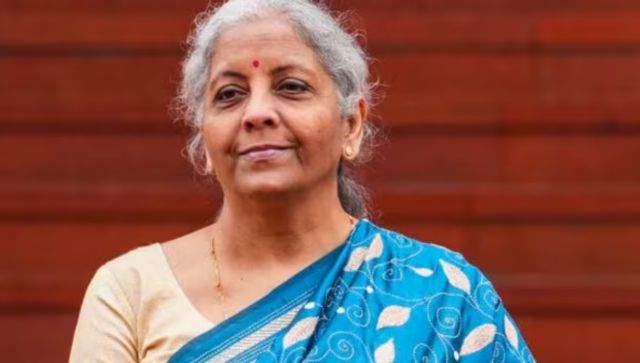Finance minister Piyush Goyal will present the interim budget for 2019-20 fiscal on 1 February, 2019. The finance ministry has sought inputs from different central ministries for the budget, which would be the last one of the current BJP-led NDA government before the 2019 general polls.
This will be the sixth consecutive budget to be presented by Jaitley.
As per practice, a vote-on-account or approval for essential government spending for a limited period is taken in an election year and a full-fledged budget is presented by the new government.
The Narendra Modi-government scrapped the colonial-era tradition of presenting the budget at the end of February. With the preponement of the budget, ministries are now allocated their budgeted funds from the start of the financial year beginning April.
This gives government departments more leeway to spend as well as allows companies time to adapt to business and taxation plans.
Previously, when the budget was presented at the end of February, the three-stage Parliament approval process used to get completed sometime in mid-May, weeks ahead of the onset of monsoon rains. This meant government departments would start spending on projects only from August-end or September after the monsoon season ended.
Firstpost spoke to chief executive officers of various sectors on their budget expectations:
Ankur Dhawan, Chief Investment Officer, PropTiger.com, a property portal.
Though typically governments do not change tax structure in interim budget, but this time due to improvement in direct tax collection government can provide some relaxation to middle class. Real estate industry will be expecting increase in tax benefits on home loan interest from 2 Lakh to 3 Lakh as well as modification in tax slabs to incentivise home buying.
Saurabh Garg, Co-founder and CBO, NoBroker.com, a property portal
Considering the current set of challenges in real estate, while efforts have been made to streamline most processes, the 2019 budget could do a lot more. Changes such as creating a Single Window Clearance system, bringing Real Estate under GST, and tightening RERA rules to strengthen investor sentiment would be very welcome. These coupled with raising the personal income tax exemption limit for interest on home loans and rental income would be much to the advantage of home-buyers and the sector as a whole. Although GST has been introduced in real estate, it still requires further rationalisation as additional levies like stamp duty and registration are still separately charged. They should be included within a single tax structure. Lowering the GST slab on under-construction properties to 5 or 6 percent from the existing 12 percent would usher in a lot of positive movement in the sector.
Sampad Swain, Co-Founder & CEO, Instamojo, a fintech firm
Over the years, MSMEs have been battling to get loans, given their inability to produce relevant assets as evidence. The current gap between the demand and credit supply within the Indian MSME sector is about $230 billion, says a study by the World Bank. The much-awaited interim Budget 2019 will determine the extent to which the government will help this sector expand. The past four years have witnessed the implementation of several measures to uplift the MSME sector, especially given the rise in previous year’s Budget to Rs 6,552.61 crore and other measures such as debt restructuring and the 59-minutes loan portal. With digitisation disrupting the Indian ecosystem in multiple dimensions, one can expect a hike in the rate of digital adoption by MSMEs, when given the right amount of funds and focus to secure their transactions and businesses online. This involves an increase in investment in the digital lending sector, to help lending platforms fuel the growth of digital SMEs and MSMEs.
Vineet Chaturvedi, co-founder, Edureka, a global online learning company
‘Skilling’ and ‘continuous learning’ have become sufficiently important requirements in today’s competitive professional landscape so much so that even the Indian government has taken note of it and launched skill development initiatives. What could accelerate India’s skill development story even further and provide fodder to corporate growth is a ‘skilling allowance’ for all tax paying individuals. Such a rebate that rewards continuous learning will go a long way in creating an industry-relevant workforce that can make India a skill hotspot. Continuous learning is a necessity and not just an option anymore and by treating it on par with necessary allowances such as HRA, LTA, DA and others, GOI would be doing India a great service. After all, India’s biggest strength is its human resource. Such an allowance will also be beneficial to IT, ITes industries which are subject to frequent skill churn and the ed-tech industry which has been working towards addressing this skilling need on ground.
A reduction in GST would greatly help boost a culture of upskilling among Indians and this is indeed the need of the hour for India to maintain an edge in technical skills. Education and up-skilling is no luxury and it should not be taxed as such. It is said that India lags behind even Sudan when it comes to its investments in education and healthcare mapped as a measurement of its commitment to economic growth, according to Institute for Health Metrics and Evaluation. It’s time to change that.
Avneet Singh Marwah, Director and CEO of Super Plastronics Pvt. Ltd,—a Kodak brand licensee
The Indian government has been very supportive to the TV manufacturing industry and the recent reduction in GST has proven to be a great example. In a move to promote domestic manufacturing, we are expecting FM to reduce customs duty on ‘open cell’ used in the manufacturing of LCD and LED television panels to zero percent from the current 5 percent. As a lot of brands have started importing TVs from ASEAN countries under FTA; major brands have stopped manufacturing televisions in India. This has impacted the Make in India initiative to a larger extent, close to which 1 million TV units have already been imported this year under FTA.
Siddharth Angrish, Founder, Jiyyo.com, an Artificial Intelligence-based patient care coordination platform
The Narendra Modi government has shown good interest in an upcoming startup with initiatives like Start-Up India and Digital India. Startup India has been quite a success. As an entrepreneur, I am expecting more and easy funding opportunities for startup growth in India from the 2019 budget. Also, we hope that startups are given more relaxation in GST and decreased regulatory interferences while applying for various tenders.
Siddharth Jain, Co-Founder, Vaahika, an online marketplace venture focusing on intercity goods transport
The seamless highway is the need of the hour to make logistics more efficient and profitable. It is understood that the government has been looking for solutions to reduce traffic snarls on highways; which has now become a major hassle for transporters. It is very much expected that the government should share a detailed outline or implementation vision on ’toll-plaza free" seamless highways in this budget. It is also expected that the government will address the need of one nation - one permit in this budget; which has been suggested by the Logistics committee as well.
Akshay Singhal, Founder, Log 9 materials, a startup in the nanotechnology domain
Electric mobility is extremely important for India, however, the adoption has been rather slow due to high cost of vehicles and challenges with daily use. This high cost is primarily driven by imports of technology and components for these vehicles. India needs to develop its own indigenous technologies which are better suited for the Indian ecosystem. Current li-ion technology for electric vehicles is a big strategic disadvantage for India as it does not have any reserves of lithium or cobalt. Hence, today instead of being dependent on imports for petroleum, India is headed towards dependence on other nations for lithium and cobalt in future. It is commendable that significant steps have been taken towards indigenous manufacturing of li-ion batteries in India, but it is vital from strategic standpoint to stress and allocate funds for indigenous development of energy technologies better suited for the Indian climate and ecosystem. One such technology is aluminium-air batteries which not only gives you long driving range without the need for huge charging infrastructure but is also powered by Aluminium. India is the third-largest producer of aluminium in the world. Further, it is our expectation that nanotechnology is given boost by setting up grant schemes for startups which are coming up with innovative technologies for future readiness.
Rajesh Loomba, Managing Director, Eco Rent A Car, a professional car rental and ground transportation company
Orevious budgets and governments have always neglected tourism. I hope in this budget some focus is put into tourism as a generator of employment and not be treated as an elitist activity. The government did not deliver as per promise in 2018 Budget. Taxation on tourism remains regressive. There are no incentives on new investment whereas tourism and tourist transportation creates the most employment per rupee of investment.
Divya Jain, CEO, and Founder, Safeducate
In the previous Budget 2018 Government took key steps in skilling and also increased the funds. In this Budget 2019, we expect that the government should take key steps in raising the quality of skills to levels demanded by a potential employer or even required for a person to start one’s own business. The focus should be on integrating strategies to increase skilling outcomes and sustain economic growth. Current skill development initiatives should be integrated with nation-building mission programmes. As an organisation which provides skilling and get funded from the Government to execute the skilling programme, we seek some tax benefits. Constructing the skilling center requires a lot of physical material which is being charged along with GST. We are not being able to reclaim the GST we had paid in the Inward supplies. Also, we have various certification and degree programmes in logistics and supply chain management where we are not being exempted from GST. Support in terms of medical allowance for students that are being trained in skilling programmes. As technology is changing, the Government needs to allocate more funds to improve the quality and develop excellence in skilling centers. The government has promised and initiated schemes in skilling such as PMKVY 2.0, DDU-GKY, NAPS, Bharatmala and Sagarmala, PMKK etc. These schemes have helped us to reach the rural parts of India. The government has been successful in implementing these schemes through strict monitoring and have been able to skill the rural youths of India.
Sajiv Nath, MD, Yokogawa India Ltd., a process automation firm
It seems to me that this year’s budget will focus on the consumer may be by lowering the tax rates for the coming year. There have been a lot of expectations from the budget by the real estate, automobile sectors etc to name a few. The 2018 Union Budget saw the Finance Ministry enhancing tariff protection for a wide range of sectors, including mobile phones, electrical and non-electrical machinery, automobiles and textiles. We have been witnessing growth in the automation and tech sector and feel the policies could be better to boost the sector. There are a few expectations that we have from the Government this year. The measures might sound populist but the government needs to agree that it took a stand in the previous budget to enhance tariffs to protect the interests of the domestic manufacturers. But, I think to a certain extent some more serious measures are required for ease of business. The reason for the same is that the industry is struggling and working hard to keep the business going in the face of grasping tactics from MNC’s.
To keep watching India’s No. 1 English Business News Channel – CNBC-TV18, call your Cable or DTH Operator and ask for the Colors Family Pack (inclusive of 24 channels), available for Rs. 35/- per month, or subscribe to the channel for Rs. 4/- per day.
To keep watching the Leader in Global Market & Business News – CNBC-TV18 Prime HD, call your Cable or DTH Operator and ask for the Colors Family HD Pack (inclusive of 25 channels), available for Rs. 50/- per month, or subscribe to the channel for Rs. 1/- per day.


)




)
)
)
)
)
)
)
)